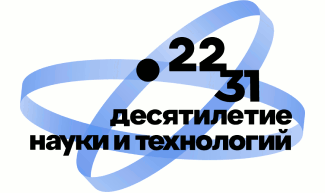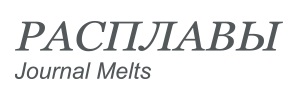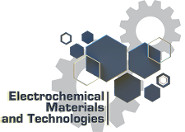
The third scientific workshop “Development of technologies and equipment for the pyrochemical processing of fast neutron SNF” took place at the Ural Federal University named after the First President of Russia B.N. Yeltsin (Ekaterinburg) on March 3-4 . The technology for pyrochemical processing of spent nuclear fuel (SNF) is created as a part of a Breakthorugh, the Rosatom’s large-scale project, which involves the efficient reprocessing of spent nuclear fuel on the basis of closed nuclear fuel cycle and the creation of new environmentally friendly and safe energy industry.
Over 100 specialists in this field attended the workshop: scientists from the Institute of High Temperature Electrochemistry, Ural Branch of the Russian Academy of Sciences, who, in collaboration with colleagues from the Ural Federal University and research institutes of Rosatom, create pyrochemical technology for reprocessing the spent nuclear fuel using molten salt media as well as the representatives of Rosatom enterprises, including Proryv, Research Institute of Atomic Reactors, Institute of Reactor Materials, NPO Mayak, Siberian Chemical Combine, Radium Institute named after V.G. Khlopin, NPF Sosny, the SPEKS, the STC for Nuclear Radiation Safety and other organizations, not to mention the Russian Chemical-Technological University named after D.I. Mendeleev, the National Research Nuclear University MEPhI.
The workshop participants were welcomed by the Scientific Director for the development of the pyrochemical technology for spent fuel processing at Proryv, Yuri Zaykov, Doctor of Sciences in Chemistry, Vladimir Kruzhaev, Vice-Rector for Science at UrFU, Yury Mochalov, chief technologist at the Proryv project area. Leonid Sukhanov, Deputy General Director of Proryv – Head of the Responsibility Center “Development of Promising Technologies for Processing of SNF RBN”, noted that a large scientific and technical reserve was created for the PIRO project in a short period from 2017 to 2019, design and testing are being carried out on simulators of the experimental pyrochemical plants, and issues of equipment robotization are being studied. The main object of pyrochemical technology implementation will be the RBN SNF reprocessing module as a part of the Experimental Demonstration Energy Complex ( to launch in 2029). Work is underway to justify the creation of the Industrial Energy Complex, where it is also supposed to use pyrochemical technologies. So, all the participants of the Breakthrough project for many years to come are provided with interesting and important work, which certainly corresponds to the world scientific and technical level and advanced trends in nuclear energy.
The results of work for 2019 were summed up by Vadim Kovrov, the chief technologist of the project for the creation of the pyrochemical technology for reprocessing spent nuclear fuel. The basic technological operations for the pyrochemical processing of spent nuclear fuel were developed, various devices and plants were manufactured, technological control facilities, and sample preparation stands were created.
For two days, the seminar participants discussed in detail the results of experiments related to the development of pyrochemical processes for the processing of spent nuclear fuel, as well as the creation of pyrochemical equipment.
Yuri Zaykov, the project’s supervisor, Doctor of Sciences in Chemistry, noted that today the electrochemical technology of nuclear fuel reprocessing is already taking on real shape. We asked him to answer several questions:
For two days, the seminar participants discussed in detail the results of experiments related to the development of pyrochemical processes for the processing of spent nuclear fuel, as well as the creation of pyrochemical equipment.
Yuri Zaykov, the project’s supervisor, Doctor of Sciences in Chemistry, noted that today the electrochemical technology of nuclear fuel reprocessing is already taking on real shape. We asked him to answer several questions:
– How would you determine the current stage of the project?
– We are moving from the stage of deep fundamental research to the stage of development work. Models of devices are already appearing, which are prototypes of devices that will work in production. This does not mean that we will stop fundamental research – it will be possible to optimize the technology and make the necessary changes in it in the future, during its industrial implementation.
– The project is designed for a sufficiently long period, what is it connected with?
– Nuclear energy requires a serious attitude. A small mistake, inattention to details can lead to disastrous consequences, therefore, many checks, confirmations of the reliability of the results are needed.
– We are moving from the stage of deep fundamental research to the stage of development work. Models of devices are already appearing, which are prototypes of devices that will work in production. This does not mean that we will stop fundamental research – it will be possible to optimize the technology and make the necessary changes in it in the future, during its industrial implementation.
– The project is designed for a sufficiently long period, what is it connected with?
– Nuclear energy requires a serious attitude. A small mistake, inattention to details can lead to disastrous consequences, therefore, many checks, confirmations of the reliability of the results are needed.

– What are the advantages of the pyrochemical technology of spent nuclear fuel processing compared to hydrometallurgical?
– Both hydrometallurgical and pyrochemical technologies generate radioactive waste. After hydrometallurgical processing, these are liquid wastes that are difficult to dispose, and after pyrochemical processing, they become compact wastes in the form of salts and solid oxides. It is more economical and safer.
– What is the contribution of the Institute of High Temperature Electrochemistry of the Ural Branch of the Russian Academy of Sciences to the implementation of the project?
– Essentially, the entire pyrochemical reprocessing scheme for the SNF is based on research by scientists from our institute and their colleagues from UrFU. This is also evident from the topic of the reports of our employees at the seminar, which discussed the issues of the recovery of oxidized nuclear fuel, the disposal of radioactive waste, the occurrence of electrode processes, the corrosion behavior of materials, the development of oxygen pumps and sensors based on solid electrolytes, and the pyrotechnic devices modeling. And it is very important that, along with experienced specialists, very young researchers, masters, and even students of the chemical-technological and physical-technological institutes of UrFU are involved in the project.
– Both hydrometallurgical and pyrochemical technologies generate radioactive waste. After hydrometallurgical processing, these are liquid wastes that are difficult to dispose, and after pyrochemical processing, they become compact wastes in the form of salts and solid oxides. It is more economical and safer.
– What is the contribution of the Institute of High Temperature Electrochemistry of the Ural Branch of the Russian Academy of Sciences to the implementation of the project?
– Essentially, the entire pyrochemical reprocessing scheme for the SNF is based on research by scientists from our institute and their colleagues from UrFU. This is also evident from the topic of the reports of our employees at the seminar, which discussed the issues of the recovery of oxidized nuclear fuel, the disposal of radioactive waste, the occurrence of electrode processes, the corrosion behavior of materials, the development of oxygen pumps and sensors based on solid electrolytes, and the pyrotechnic devices modeling. And it is very important that, along with experienced specialists, very young researchers, masters, and even students of the chemical-technological and physical-technological institutes of UrFU are involved in the project.
– Until now, the main executor of the project was IHTE. And what will happen in the future?
– Since 2020, the Ural Federal University, which has much greater resources to support the project, will take on this role. We will continue to work in close contact. It is the alliance of academic institutions, large universities (primarily UrFU) and, of course, research institutes and enterprises of Rosatom that will allow us to achieve optimal results.
– Since 2020, the Ural Federal University, which has much greater resources to support the project, will take on this role. We will continue to work in close contact. It is the alliance of academic institutions, large universities (primarily UrFU) and, of course, research institutes and enterprises of Rosatom that will allow us to achieve optimal results.
The decision of the seminar outlined the main directions of work for 2020: confirmation of the technological regimes of pyrochemical operations by experiments using model spent nuclear fuel and limited amounts of real SNF; design of experimental pyrochemical equipment with the study of the possibility of its robotization, testing and selection of structural materials for it; reduction of the generation of radioactive waste from pyrochemical operations, digitalization in the framework of the PIRO project; creation of products that have commercialization prospects, including in the non-nuclear business.
written by E. Ponizovkina
http://www.uran.ru/content/2020-8
Year: 2020
Month: march
Issue Number: 5
Absolute number: 1209




